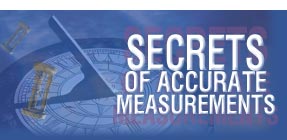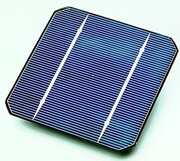 |
 |
 |
| RU |
|
Login
Newsletters
There is no newsletter category found. Information
|
Keithley Instruments' Solar Cell Testing Survey Shows Priorities and Best Practices in Test Methods 02/19/2010 A recent survey of solar cell/photovoltaic device researchers and manufacturers working in government, university-based, and corporate labs and manufacturing facilities indicates distinct differences in testing methods and priorities among respondents from Asia, North America, and Europe. Keithley Instruments, Inc. (NYSE: KEI) conducted the study during Summer 2009 using a by-invitation-only online survey generating 564 responses. A white paper summarizing the results is available for downloading at no charge from Keithley's website at www.keithley.com/data?asset=52794. Across all geographies, the survey indicated the industry is focused on improving device efficiencies as the dominant development priority. "Reducing manufacturing cost" was the second most important among the respondents, as might be expected, although substantially less significant than the need to boost device and panel performance. Clear Priority Emerges for Top Four Solar Cell Test Methods For those engaged in solar cell research and development, a large majority of respondents worldwide identified their "key parameters" for measurement as short-circuit current (ISC), open-circuit voltage (VOC), maximum output power (PMAX) and, to a lesser extent, conversion efficiency. Respondents in North America and Europe showed consistent agreement on what constitutes their most important tests, with a well-defined gap between these top four and ten other tests. Respondents from Asia, while agreeing with the same top four tests, showed much less preference for them as other tests were cited as key parameters nearly as often as the top four. "The top three tests indicated by respondents are consistent with what customers tell us are important methodologies for them in the research phase," noted Keithley Marketing Director Mark Cejer. "We were a bit surprised not to see more priority given to shunt resistance and series resistance tests, as we hear quite a bit about how important those measurements are to characterizing device performance. Overall, other than a clear preference for the top three tests, there remains a significant amount of variation in the industry about what tests are most meaningful. There may be several reasons for this variation. For example, the tests used may vary depending on the cell technology or on the market for which they are intended. Also, many of the solar cell technologies are relatively new and therefore there are no industry-standard testing methodologies." The priority of test parameters characterized as solar cell/photovoltaics move into production remained much the same, but there was far less agreement about the most important tests than was found in the research lab. And, Asian respondents were far more definitive about the most valuable solar cell tests for production than for research applications. Engineers in general seem to be relatively unfazed by the solar cell industry's rather complicated battery of tests. When asked which tests presented technical challenges, none of the 15 tests appeared to pose a problem for a large portion of the respondents, either in the research or production test phase. This held true for even the most demanding tests included on the list, such as quantum efficiency and conversion efficiency. Maximum power output was identified as the most difficult test to perform, with 28% noting it as the "most challenging," perhaps reflecting the difficulty of integrating 50W power supplies into a test system for this type of research. PV Device Technologies Survey respondents report engagement in a broad range of solar cell/PV device technologies, including established, relatively well-characterized technologies for making PV devices out of monocrystalline, multicrystalline, or amorphous silicon, as well as newer thin-film technologies such as copper indium gallium selenide (CIGS), cadmium telluride (CdTe), and gallium arsenide (GaAs). In general, respondents seemed more active in thin-film materials than in silicon, perhaps due to the improved response rates and capacitive properties of thin-film materials. Given the staggering array of device technologies now being explored or developed, the industry seems poised to become larger and increasingly competitive, with manufacturers making significant investments in finding new ways to extract the maximum energy at the lowest possible cost from every photon that reaches their products. Asian manufacturers appear firmly committed to playing a major role in the worldwide solar cell industry. For More Information To learn more about Keithley's solar cell test solutions or to download a free copy of the white paper outlining the results of the survey, visit www.keithley.com/data?asset=52794 or contact the company.
About thin film solar cell technology A thin-film solar cell (TFSC), also called a thin-film photovoltaic cell (TFPV), is a solar cell that is made by depositing one or more thin layers (thin film) of photovoltaic material on a substrate. The thickness range of such a layer is wide and varies from a few nanometers to tens of micrometers. Many different photovoltaic materials are deposited with various deposition methods on a variety of substrates. Thin-film solar cells are usually categorized according to the photovoltaic material used:
Find more in Wikipedia: http://en.wikipedia.org/wiki/Thin_film_solar_cell Related Information:
Companies' news
KIPiS articles
KIPiS News & Events
|
Current issue
Search
|
|
|
| © "Test & Measuring Instruments and Systems" ("KIPiS"), 2000-2024 |

























